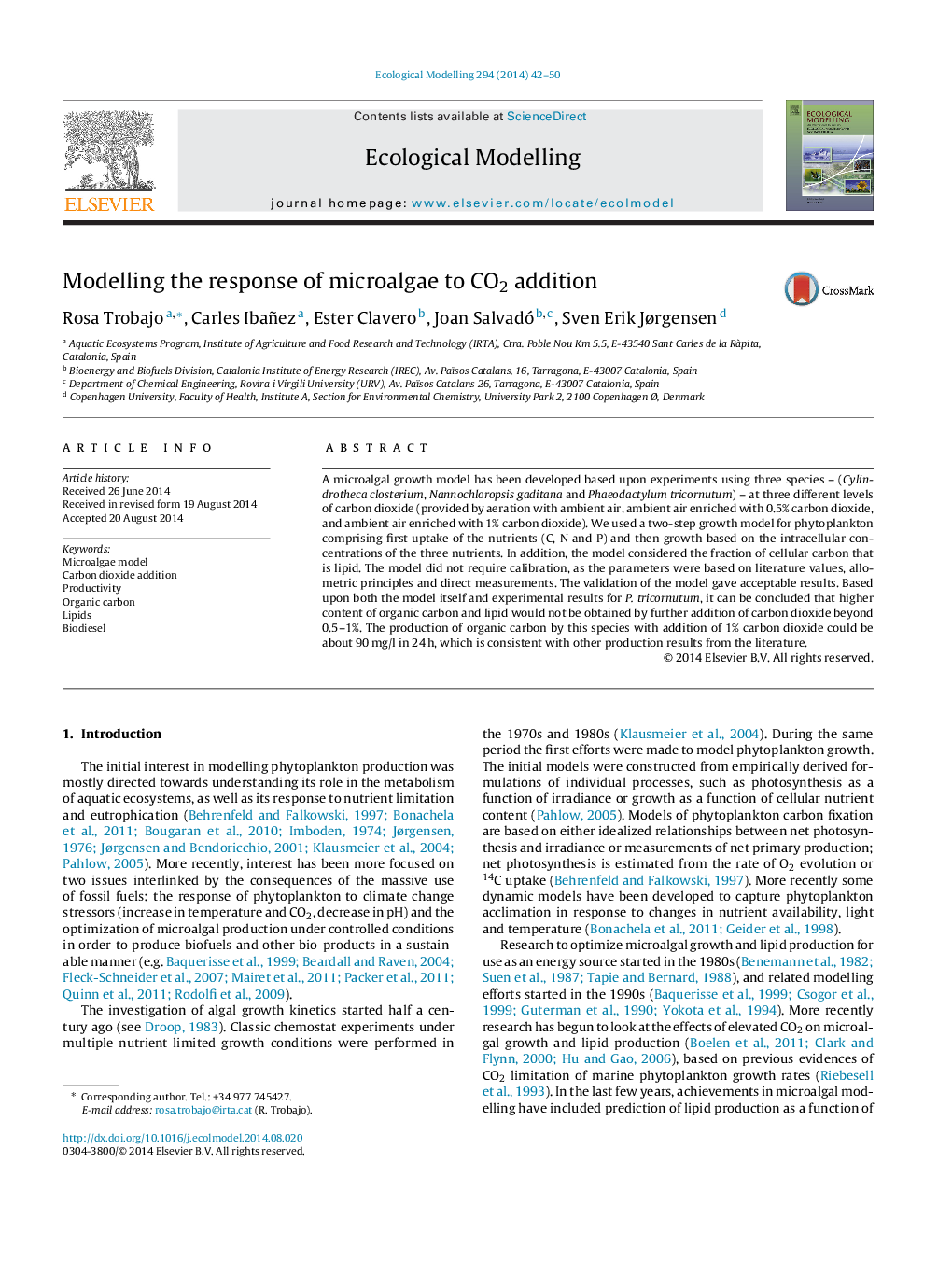| Article ID | Journal | Published Year | Pages | File Type |
|---|---|---|---|---|
| 6296696 | Ecological Modelling | 2014 | 9 Pages |
Abstract
A microalgal growth model has been developed based upon experiments using three species - (Cylindrotheca closterium, Nannochloropsis gaditana and Phaeodactylum tricornutum) - at three different levels of carbon dioxide (provided by aeration with ambient air, ambient air enriched with 0.5% carbon dioxide, and ambient air enriched with 1% carbon dioxide). We used a two-step growth model for phytoplankton comprising first uptake of the nutrients (C, N and P) and then growth based on the intracellular concentrations of the three nutrients. In addition, the model considered the fraction of cellular carbon that is lipid. The model did not require calibration, as the parameters were based on literature values, allometric principles and direct measurements. The validation of the model gave acceptable results. Based upon both the model itself and experimental results for P. tricornutum, it can be concluded that higher content of organic carbon and lipid would not be obtained by further addition of carbon dioxide beyond 0.5-1%. The production of organic carbon by this species with addition of 1% carbon dioxide could be about 90Â mg/l in 24Â h, which is consistent with other production results from the literature.
Related Topics
Life Sciences
Agricultural and Biological Sciences
Ecology, Evolution, Behavior and Systematics
Authors
Rosa Trobajo, Carles Ibañez, Ester Clavero, Joan Salvadó, Sven Erik Jørgensen,
